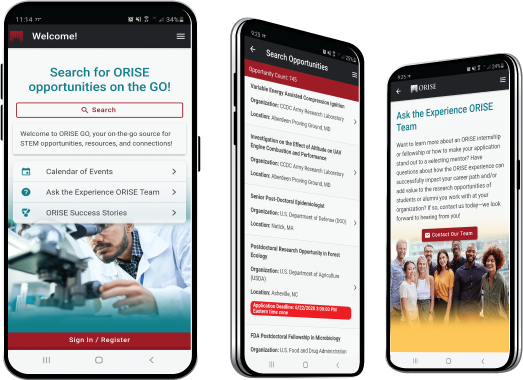Pharmaceutical Environmental Assessment Research - CDER
A complete application consists of:
- An application
- Transcripts – Click here for detailed information about acceptable transcripts
- A current resume/CV, including academic history, employment history, relevant experiences, and publication list
- Two educational or professional references
All documents must be in English or include an official English translation.
If you have questions, send an email to FDArpp@orau.org. Please include the reference code for this opportunity in your email.
The National Environmental Policy Act of 1969 (NEPA) requires all Federal agencies to assess the environmental impact of their actions. To comply, FDA implements 21 CFR Part 25, which includes a requirement for an environmental assessment (EA) if “extraordinary circumstances” indicate that the specific proposed action may significantly affect the quality of the human environment. The new EA draft guidence, Questions and Answers Regarding Drugs With Estrogenic, Androgenic, or Thyroid Activity, informs drug applicants that recent research indicates that some drugs with hormonal activity in the environment may exhibit “extraordinary circumstances” and that the Agency may require additional ecotoxicity testing for applications submitted for drugs with hormonal activity. In addition, antimicrobial, additivity/synergism, nanotechnology, and other properties have been implicated for possible adverse environment effects, as well as human effects through environmental pathways. Also, other Centers (e.g., CVM), agencies (e.g., EPA), and regions (e.g., EU) have begun addressing these issues through research, guidance, and regulatory development. The EA Staff requires support for research and implementation to address these issues.
Project objectives include:
1. Identify appropriate ecological toxicity endpoints, study designs, and testing approaches to best characterize risks due to the introduction of drugs with hormonal activity into the environment.
2. Assess the potential environmental role of other properties and effects, including antimicrobial resistance, nanotechnology, and additivity/synergism, for drugs normally subject individually to a categorical exclusion.
3. Evaluate approaches currently established or undergoing research, guidance development, and regulatory changes by other Centers, agencies, and countries/regions.
4. Determine how to best incorporate the results within CDER’s current regulatory structure and in harmony with other Centers, agencies, and countries/regions.
This program, administered by ORAU through its contract with the U.S. Department of Energy to manage the Oak Ridge Institute for Science and Education, was established through an interagency agreement between DOE and FDA. The participant will receive a monthly stipend commensurate with educational level and experience. Proof of health insurance is required for participation in this program. The appointment is full-time at FDA in the Silver Spring, Maryland, area. Participants do not become employees of FDA or the program administrator, and there are no fringe benefits paid.
- A Master's or Doctoral degree in aquatic ecology, biology, biochemistry, toxicology, or a closely related field.
- A strong understanding of biochemical or adverse outcome pathways.
- Knowledge or experience with drugs in the environment preferred.

 ORISE GO
ORISE GO

The ORISE GO mobile app helps you stay engaged, connected and informed during your ORISE experience – from application, to offer, through your appointment and even as an ORISE alum!





